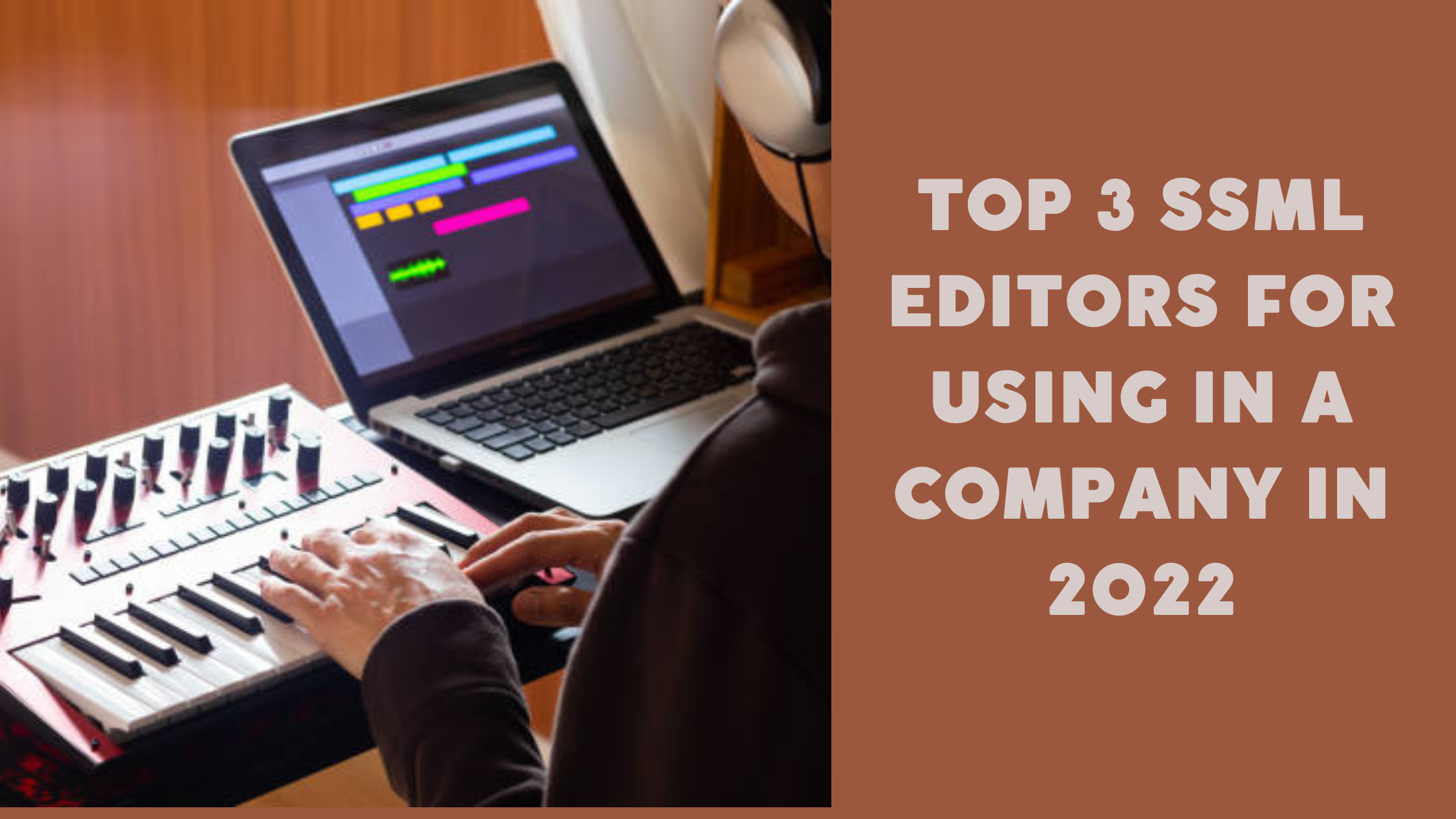Do you have a business? Do you know what an SSML Editor is? Learn about the subject with this article where we show you what a Text to Speech Converter is!
The internet has evolved beyond passive text on a screen. It requires some getting used to for web editors and UX designers to create services and information that should be spoken aloud. We’re moving forward quickly with the implementation of content management systems that allow for headless and API-based access to our content.
Making editorial tools that make it simpler to adjust material for voice is the last step. Most voice assistants utilize Speech Synthesis Markup Language (SSML) for producing speech, whereas web browsers use the HyperText Markup Language (HTML) definition from the W3C.

Businesses stand to benefit in a number of ways from the development of AI-enabled TTS. For example, companies could have speedier turnaround times and more cost-effective production. That’s because a machine can precisely translate text to voice given the appropriate settings, eliminating the need for the inevitable revisions voice actors must make.
Additionally, this technology enables linguists to alter prosody, pitch, pace, and pronunciation in human-in-the-loop processes, ensuring even better outcomes with the use of post-editing and standards for speech synthesis editing like SSML.
TTS is evolving in several ways. For instance, voice cloning may be used to make a machine embody the essence of your company. For businesses in the entertainment sector, voice cloning allows you to add recognisable voices from voice recordings and data sets by employing TTS with executives and celebrities. To do this, we have this list of platforms you could use:
Woord
Woord was founded in London, United Kingdom. Woord. is a technology business that specializes in providing excellent voice solutions for software, web, and mobile applications. Members of Woord put a lot of effort into meeting your demands by maintaining and enforcing the company’s standards while also enhancing all facets of products and services.
Woord can be utilized in industrial control systems and public transportation announcement systems for emergency alerts and notifications. Several gadgets, including set-top boxes, smart watches, tablets, smartphones, and Internet of Things (IoT) devices, can produce audio using Woord. IVR (interactive voice response) systems and telephony solutions can employ words. Applications for cloud-based TTS solutions like Woord include quiz games, animations, avatar creation, and narration development.
ReadSpeaker
A specialized platform called ReadSpeaker provides dozens of languages and actual voices. It employs proprietary technology and offers some of the most lifelike-sounding artificial voices available. Modern deep neural network (DNN) technology is used by ReadSpeaker to structurally enhance voice quality at all levels. With offices in 15 nations and more than 10,000 clients in 65 countries. Businesses and organizations may use ReadSpeaker to create custom voices, provide speech output for web, embedded, server, or desktop applications, and more. The team of professionals at ReadSpeaker is at the forefront of text-to-speech technology and has over 20 years of expertise.
Murf.ai
For a professional voiceover for your movies and presentations, Murf provides a variety of 20 languages of AI voices that are 100 percent natural-sounding. Every voice on this site has a human sound, and the quality is examined using a variety of criteria. Murf provides a range of voices in 20 different languages. For quality testing the majority of languages have voices accessible. Multiple accents are also supported in some languages, such as English, Spanish, and Portuguese. Additionally, it offers a “Pitch” feature that allows you to personalize the voice to suit your needs and attract focus to words or phrases that convey emotion.




